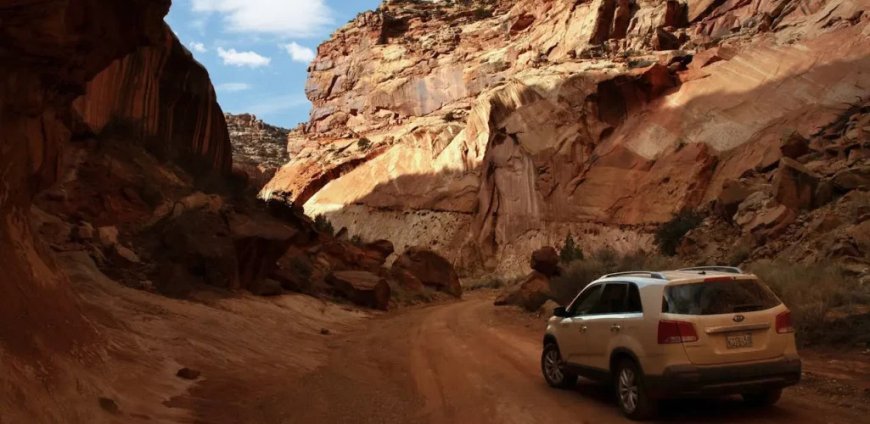How Utah’s Minimum Auto Insurance Requirements Compare to Other States
Utah requires no-fault auto insurance with minimum liability and PIP coverage, but is it enough? Learn how Utah’s requirements compare to other states and why extra protection may be worth it.

When it comes to staying legal on the road, every state has its own auto insurance laws. If youre a driver in Salt Lake City or anywhere in Utah, its crucial to know what coverage is requiredand how it stacks up against other states.
Understanding the Utah car insurance requirements can help you avoid penalties, protect your finances after an accident, and even make smarter decisions about whether to carry only the minimum or add more coverage for better peace of mind.
What Are the Minimum Auto Insurance Requirements in Utah?

Utah is a no-fault insurance state, which means your policy pays for certain expenses regardless of who caused the accident. By law, every Utah driver must carry at least:
-
$25,000 for bodily injury per person
-
$65,000 for bodily injury per accident (if multiple people are injured)
-
$15,000 for property damage liability
-
$3,000 in Personal Injury Protection (PIP)
This ensures that after a crash, your own policy covers initial medical expenses, reducing lawsuits for minor accidents. However, if damages exceed these limits, you could still be financially responsible.
How Utah Compares to Other States
Utahs required limits are fairly moderate compared to the national landscape.
-
Lower than Maine or Alaska
These states require $50,000$100,000 bodily injury limits, almost double Utahs. -
Higher than California
Californias minimums are just $15,000/$30,000 bodily injury and $5,000 property damage, making Utah slightly more protective. -
Similar to Colorado
Colorados limits are close, but its not a no-fault state, meaning lawsuits are more common after accidents.
Where Utah stands out is the mandatory Personal Injury Protection (PIP)not every state requires it. States like Texas or Arizona dont have PIP, while others like Florida have much higher PIP requirements.
Why the Minimum Might Not Be Enough
While Utahs minimum coverage keeps you legal, it doesnt always keep you fully protected. Heres why:
-
Medical costs can exceed $3,000 easily after even a minor accident.
-
If you hit a luxury car or cause a multi-vehicle accident, $15,000 property damage coverage might barely scratch the surface.
-
Serious injuries can exceed $25,000 per person, leaving you personally liable for the remaining expenses.
Thats why many insurance experts recommend carrying higher liability limits and considering additional protections like uninsured motorist coverage or comprehensive and collision insuranceespecially if you drive in busy Salt Lake City traffic or during snowy Utah winters.
How Utahs No-Fault System Impacts Drivers
Utahs no-fault law allows accident victims to step outside the no-fault system and sue only if:
-
Medical expenses exceed $3,000
-
The injuries cause permanent disability, disfigurement, or dismemberment
This threshold keeps minor accidents from turning into legal battles but also means your basic policy might not cover severe cases. In other states like Nevada or Idaho, fault determines payment immediately, so liability coverage plays a bigger role.
Should You Buy More Than the Minimum?
Here are situations where adding coverage makes sense:
-
You own a newer or financed car Lenders often require collision and comprehensive insurance.
-
You commute daily on highways like I-15 or I-80 High-traffic areas increase accident risk.
-
You want peace of mind Raising your liability to $100,000/$300,000 costs only a little more but protects you from major lawsuits.
Think of minimum insurance as bare-bones protectionits legal but may not fully safeguard your finances.
Utah vs. Neighboring States Car Insurance Coverage
| State | Bodily Injury Minimum | Property Damage Minimum | PIP Required? |
|---|---|---|---|
| Utah | $25,000/$65,000 | $15,000 | Yes ($3,000) |
| Nevada | $25,000/$50,000 | $20,000 | No |
| Idaho | $25,000/$50,000 | $15,000 | No |
| Colorado | $25,000/$50,000 | $15,000 | No |
Utah stands out for mandatory PIP coverage, which helps with medical bills but doesnt reduce the need for strong liability limits.
Final Thoughts
While Utahs required insurance limits are designed to provide basic financial protection, they may not be enough in serious accidents. Comparing them with other states shows that while Utah is more protective than some, it still leaves room for financial risk if you stick to the bare minimum.
If you live in Salt Lake Citywhere winter roads, heavy commuting, and rising repair costs are commonits wise to review your policy and consider increasing your coverage for better peace of mind.
Understanding Utah car insurance requirements is the first step toward smarter, more secure driving.




































